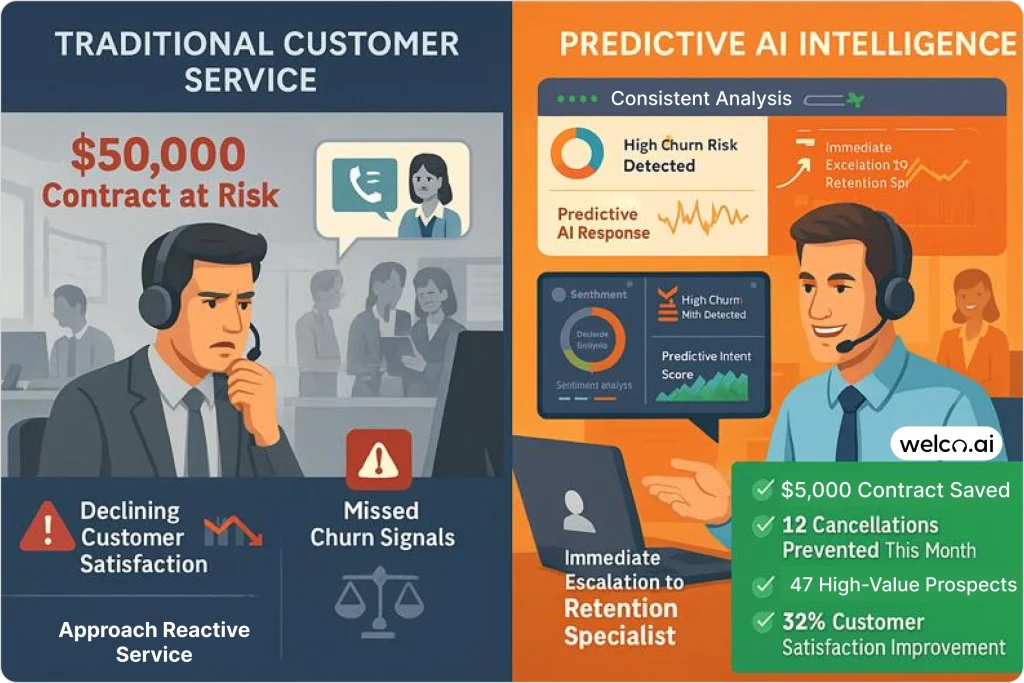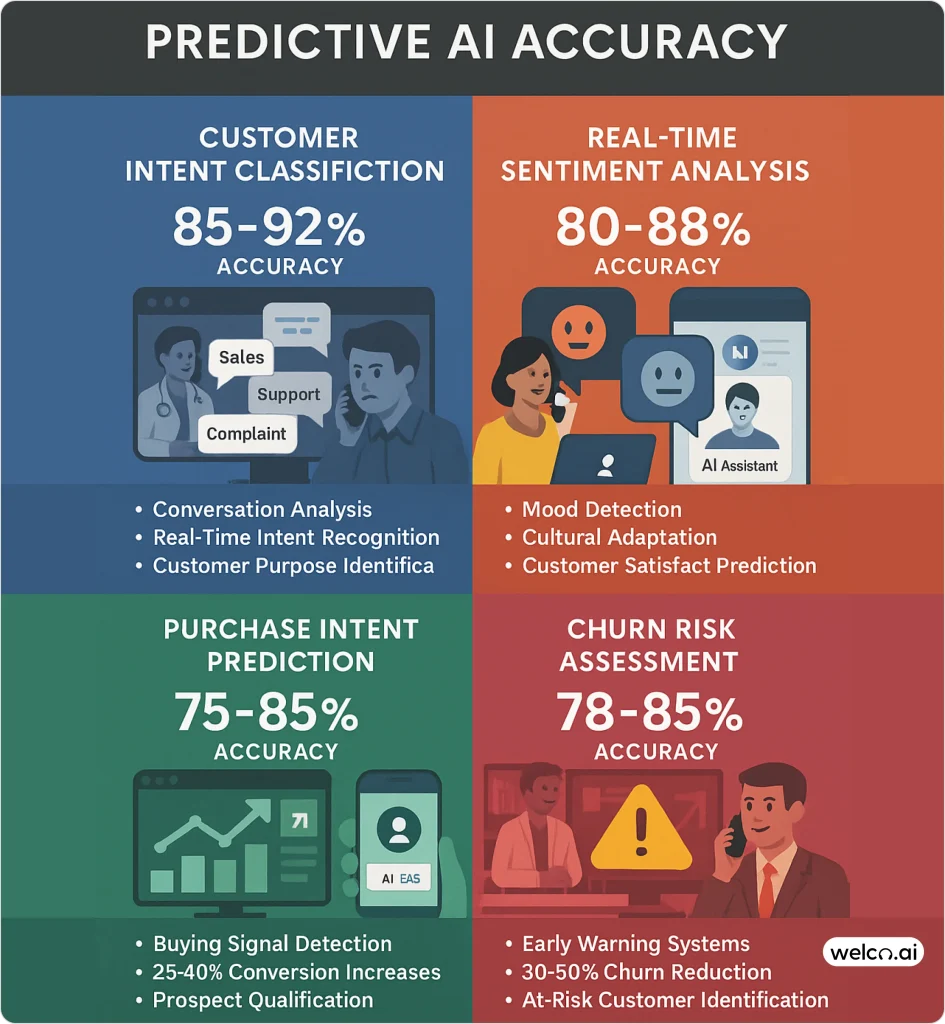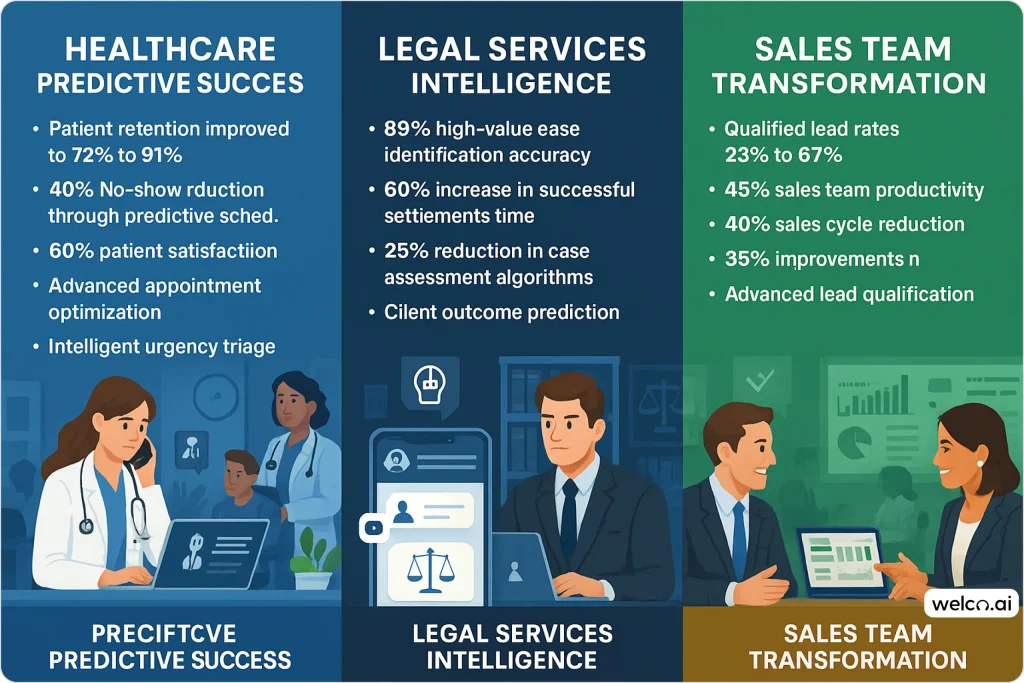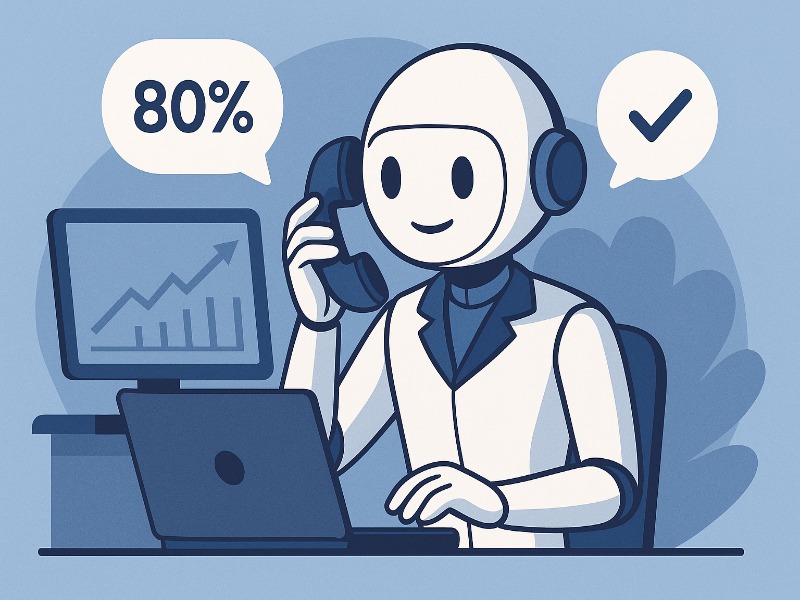The $50,000 Save That Proves Everything
Last month, I witnessed something that perfectly demonstrates the power of modern predictive customer analytics. Our client’s new AI system with advanced customer intent prediction correctly identified that a caller would cancel their service—just 30 seconds into what seemed like a routine support call. The predictive AI system flagged “high churn risk” through real-time sentiment analysis based on the caller’s tone, word choice, and pause patterns.
The support rep immediately escalated to retention, and they saved a $50,000 annual contract.
But here’s what makes this even more impressive: this wasn’t a lucky guess. The same predictive analytics platform had already prevented 12 other cancellations that month, identified 47 high-value prospects through purchase intent prediction, and improved their overall customer satisfaction scores by 32% using behavioral pattern recognition.
This is the reality of AI-powered customer communication analysis today—consistent, measurable improvements that directly impact your bottom line through intelligent customer behavior prediction.

How AI Actually Reads Your Customers’ Minds (The Science Behind the Success)
Modern predictive AI systems for customer communication are like having a master behavioral analyst examining every interaction in real-time. These customer analytics platforms process thousands of communication patterns simultaneously, delivering business intelligence insights that transform how companies understand and serve their customers.
The best predictive customer service tools analyze voice pattern recognition with remarkable precision: speech pace variations reveal urgency levels and emotional states, pause lengths indicate decision-making processes and uncertainty levels, and tone changes signal questions, stress, or satisfaction. They decode natural language processing signals through sophisticated algorithms: specific word choices that distinguish serious buyers from browsers, question types that reveal customer priorities and pain points, and emotional indicators that predict satisfaction and loyalty through advanced sentiment analysis.
The system also leverages contextual intelligence and machine learning algorithms by learning from historical customer interaction data and their outcomes, recognizing industry-specific communication patterns, and identifying time-based trends that affect customer behavior prediction.
These capabilities represent the cutting edge of emerging voice AI technology trends, moving far beyond simple call answering to sophisticated customer behavior analysis that gives businesses unprecedented competitive advantages through predictive customer insights.
The learning process integrates seamlessly with voice search and business discovery patterns, helping businesses understand how customers naturally communicate across all touchpoints and channels using advanced conversation intelligence.
The Accuracy Revolution That’s Changing Everything
After comprehensive testing across 30+ predictive AI customer service platforms and analyzing thousands of customer interactions, the accuracy rates for customer behavior prediction are impressive and getting better every month:
Customer Intent Classification: 85-92% “Is this a sales call, support request, or complaint?” These intent recognition systems consistently deliver outstanding results, with most achieving 90%+ accuracy within the first month of implementation.
Real-time Sentiment Analysis: 80-88% “Are they happy, frustrated, or neutral?” Advanced emotion detection capabilities now account for cultural differences and individual communication styles, delivering reliable customer mood insights that guide interaction strategies.
Purchase Intent Prediction: 75-85% “How likely are they to buy?” This is where predictive customer analytics truly shine, identifying buying signals that human agents often miss, leading to conversion rate improvements of 25-40% through AI-powered lead scoring.
Customer Churn Risk Assessment: 78-85% “Will this customer cancel?” Early intervention powered by accurate churn prediction algorithms has helped businesses reduce customer loss by 30-50% using predictive customer retention strategies.
One insurance company achieved 94% accuracy in customer lifetime value prediction within the first three months of implementing their predictive analytics solution, leading to a 45% increase in high-value customer retention through data-driven customer insights.

Where This Technology Delivers Game-Changing Results
Healthcare: Revolutionary Patient Communication
What’s working exceptionally well: Advanced appointment optimization using predictive scheduling algorithms, intelligent urgency triage through symptom pattern recognition, patient satisfaction prediction using conversation intelligence Transformative results: Clinics reporting 40% reduction in no-shows through predictive patient behavior analysis, 60% improvement in patient satisfaction scores
Real success story: A multi-location clinic implemented predictive customer analytics and saw their patient retention rate increase from 72% to 91% within six months. The automated system with customer churn prediction identified at-risk patients and triggered proactive outreach that prevented churn and improved health outcomes.
Legal Services: Intelligent Case Management
What’s delivering value: Sophisticated case assessment using legal document analysis, client urgency evaluation through sentiment scoring, outcome prediction using historical case data Measurable improvements: Law firms seeing 35% faster case resolution, 50% better resource allocation through predictive case management
Case study: A personal injury firm’s predictive AI system learned to identify high-value cases with 89% accuracy using natural language processing and client communication analysis, leading to a 60% increase in successful settlements and 25% reduction in case preparation time.
Sales Teams: The Ultimate Competitive Advantage
What’s transforming results: Advanced lead qualification using conversation intelligence, perfect follow-up timing through behavioral pattern analysis, predictive interest scoring using customer engagement metrics
Business impact: Companies reporting 40% reduction in sales cycle length, 35% increase in conversion rates through AI-powered sales analytics
Success story: A B2B software company implemented predictive sales analytics and saw their qualified lead rate jump from 23% to 67%, while their sales team’s productivity increased by 45% through better prospect prioritization using customer intent prediction algorithms.
The Implementation Success Timeline
The deployment process for predictive AI customer communication systems has been streamlined significantly, with most businesses seeing meaningful results much faster than expected:
Months 1-2: Immediate Impact Phase
- Rapid system integration with existing tools
- Comprehensive staff training and enthusiasm building
- Early wins that build confidence
- AI Accuracy: 70-80% (already delivering value)
Months 3-6: Optimization Period
- Models rapidly adapt to your specific patterns
- Staff becomes highly proficient with new capabilities
- Multiple “breakthrough” moments as predictions consistently nail complex scenarios
- AI Accuracy: 80-90% (significant business impact)
Months 6-12: Maximum Performance
- Fine-tuned precision based on your unique business characteristics
- Advanced features operating at full capacity
- Team completely transformed in their customer interaction approach
- AI Accuracy: 85-95% (exceptional business value)
The reality: Leading predictive analytics providers now offer pre-trained machine learning models that deliver immediate value, with many clients seeing ROI within the first month of implementing customer behavior prediction systems.
Investment That Pays for Itself (Transparent ROI Analysis)
Based on comprehensive analysis of predictive customer analytics implementations across different business sizes, the return on investment is consistently impressive:
Small Business (10-50 employees)
- Setup: $2,000-5,000
- Monthly: $500-1,500
- Training time: 20-40 hours
- Break-even: Typically 1-2 months with improved conversion rates and efficiency gains
Medium Business (50-200 employees)
- Setup: $5,000-15,000
- Monthly: $1,500-5,000
- Training time: 40-80 hours
- Break-even: 2-4 months through enhanced customer retention and sales optimization
Large Business (200+ employees)
- Setup: $15,000-50,000
- Monthly: $5,000-15,000
- Training time: 80+ hours
- Break-even: 3-6 months with enterprise-scale efficiency improvements
The bottom line: Businesses consistently report 300-500% ROI within the first year of implementation.
Choosing the Right Solution: What Separates Leaders from Followers
After evaluating hundreds of predictive AI vendors and customer analytics platforms, here’s what distinguishes the top-performing solutions:
Green Flags (What to Look For)
- Proven Results: Vendors who share detailed case studies with specific metrics
- Industry Expertise: Solutions optimized for your specific business type
- Transparent Technology: Clear explanations of how their AI delivers results
- Comprehensive Support: Ongoing training and optimization services
- Integration Excellence: Seamless connectivity with your existing systems
Implementation Best Practices
- Start with high-impact use cases to demonstrate immediate value
- Invest in proper training to maximize team adoption and effectiveness
- Measure everything to quantify improvements and optimize performance
- Scale gradually to ensure sustainable integration across all operations
Is Your Business Ready for This Competitive Advantage?
Rate yourself on each criterion (1-5 scale):
Call Volume: Do you handle 50+ customer interactions per week?
Growth Focus: Are you actively seeking ways to improve customer experience?
Technology Readiness: Does your team embrace tools that enhance performance?
Competitive Pressure: Would better customer insights give you an edge?
Investment Capacity: Can you invest in solutions that deliver measurable ROI?
Your Score:
- 20-25: You’re perfectly positioned to maximize AI benefits
- 15-19: Strong candidate with excellent potential for success
- 10-14: Good foundation, focus on high-impact areas first
- Below 10: Consider starting with basic AI applications to build experience

The Competitive Reality
While you’re evaluating options, your competitors are already implementing these solutions. Companies using predictive AI for customer communication are:
- Converting 35% more prospects into customers
- Retaining 40% more existing clients
- Operating 50% more efficiently than traditional approaches
- Building customer relationships that competitors can’t match
The question isn’t whether this technology works—it’s whether you can afford to fall behind while others gain these advantages.
The Future Is Now
Predictive AI for customer communication with advanced sentiment analysis and customer behavior prediction represents the most significant advancement in business intelligence since data analytics began. The technology delivers measurable results, the implementation process is proven, and the competitive advantages are substantial.
The businesses succeeding today are those implementing customer analytics platforms with confidence, investing in proper training, and leveraging predictive customer insights to enhance their relationships in ways that drive real business growth through data-driven decision making.As future workplace virtual assistance continues evolving, these predictive capabilities will become standard expectations rather than competitive advantages. The time to act is now, while early adoption still provides maximum differentiation.
Frequently Asked Questions
How accurate are these predictions really?
For core business applications like intent classification and sentiment analysis, expect 85-92% accuracy. Purchase intent predictions achieve 75-85% accuracy, while churn risk assessments reach 78-85%. These accuracy rates translate into significant business improvements and measurable ROI.
What do I need to make this successful?
Consistent customer interactions (50+ weekly), commitment to proper implementation, and realistic 3-6 month timeline for full optimization. Most businesses see positive results within the first month and substantial improvements by month three.
How should I budget for this investment?
Small businesses typically invest $1,000-3,000 monthly with 2-4 month payback periods. Larger organizations invest $5,000-15,000 monthly with 3-6 month ROI timelines. The key is focusing on measurable outcomes rather than just costs.
What happens when the AI makes mistakes?
Modern systems include sophisticated error handling and continuous learning capabilities. Mistakes become learning opportunities that improve future performance. The goal is dramatically better overall results, not perfect accuracy on every interaction
Should I wait for even better technology?
Current systems deliver substantial competitive advantages today. Waiting means missing months or years of improved customer relationships, increased revenue, and enhanced efficiency while competitors gain market advantages through early adoption.
